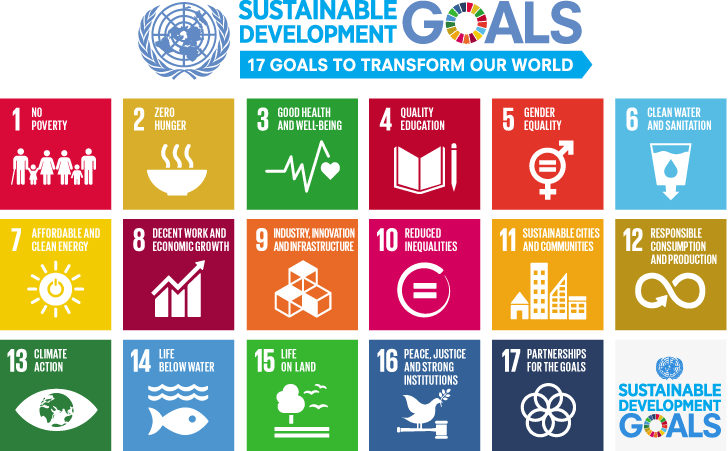Sid A.; August 30th, 2020
I have gotten some questions about what exactly the Future Column will be about. So I wanted to spell it out clearly. The Future Column will focus on how individuals in STEAM (Science, Technology, Engineering, Arts, and Mathematics) can contribute to achieving the United Nations’ “Sustainable Development Goals” (SDGs). In particular I want to look at specific solutions, initiatives, and fields that are within our reach that can help the world achieve these goals within this century. So what are the sustainable development goals?
17 Goals to Transform Our World
“The Sustainable Development Goals are the blueprint to achieve a better and more sustainable future for all. They address the global challenges we face, including those related to poverty, inequality, climate change, environmental degradation, peace and justice.” Incorporating and striving towards these goals is part of FutureScape’s primary mission, and I want to discuss them in the Future column. I thought this might be a good introduction to the goals, especially for those who haven’t seen them before. If you want to see the official page detailing the current goals, go to this link: https://www.un.org/sustainabledevelopment/sustainable-development-goals/
Poverty
This category includes “No Poverty”, “Zero Hunger”, “Clean Water and Sanitation”, “Decent work and Economic Growth”, and “Industry, Innovation, and Infrastructure”. There are a vast number of interesting STEM topics entwined with these goals, from cheap and effective water purification systems to efficient infrastructure development to effective means to transport food globally. We will touch on a few of these topics in the Future column.
Inequality and Peace and Justice
This category includes the goals for “Good health and well being”, “Quality Education”, “Gender equality”, “Reduced Inequalities”, and “Peace, Justice and Strong Institutions”. These fields are a little more difficult to associate with STEM, which is why we will try to spend some extra time writing about how engineers and scientists can contribute to the inequality goals. A number of examples can appear in the emerging “education technology” field and of course the healthcare field. We will also discuss how engineering can become more inclusive and help bridge inequalities globally.
Climate Change and Environment
This set of goals includes “Affordable and Clean energy”, “Sustainable cities and communities”, “Responsible consumption and production”, “Climate action”, “Life below water”, and “Life on Land”. STEM fields can and do have an obvious and far reaching impact on all of these goals. We will discuss some of the latest technologies and potential future technologies that will impact each of these goals.
Partnerships for the Goals
Finally, I would like to stress the last goal. These goals all interconnected and will require interdisciplinary efforts. Though the Future column will focus on how individuals in STEM fields can contribute, in order to achieve these goals professionals from all areas of human thought and creativity will be required to help. The Future lies in a united and interdisciplinary approach to tackle humanities most challenging goals.
Featured Image Credit: Image Credit


